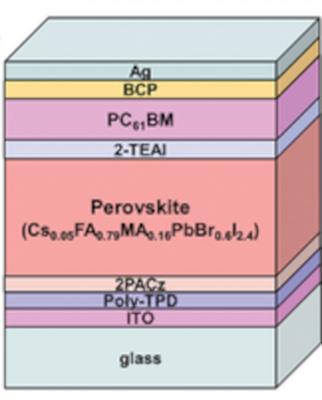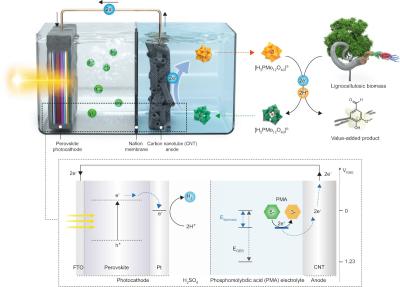Perovskite-Info weekly newsletter
Published: Tue, 11/08/22
The Perovskite-Info newsletter (November 9, 2022)
Cannot read this? View it online here
University of Helsinki researchers are working on ALD coatings for perovskite solar cells
Researchers at the University of Helsinki are developing thin films for perovskite solar cells, and matching ALD processes.
Doctoral Researcher Georgi Popov focuses on perovskites and atomic layer deposition (ALD). In 2019, He and his colleagues identified suitable chemicals and were able to design a reaction that enabled them to create a metal iodide coating through deposition for the first time. The researchers were able to demonstrate that this can actually be done through atomic layer deposition. The first successful trial was carried out with lead iodide, which was then processed into CCH₃NH₃PbI₃ perovskite through a further reaction. Later on, the researchers also developed ALD processes for caesium iodide and CsPbI₃ perovskite.
Researchers use Sulfonium cations to improve quasi-2D perovskite solar cells
Researchers from the National Center for Nanoscience and Technology (NCSNT) of the Chinese Academy of Sciences (CAS) and Beihang University have developed a sulfonium cations-assisted intermediate engineering strategy to study the evolution of intermediates and the film properties of quasi-2D perovskites. The researchers developed a facile strategy for intermediate engineering by employing sulfonium cations to regulate the transformation of intermediates during the crystallization process and improve the film quality of quasi-2D perovskites.
The intermediates were characterized by X-ray diffraction (XRD) and scanning electron microscopy (SEM) to reveal the composition and transformation process of the intermediates. The introduction of sulfonium cations inhibited the formation of unfavorable solvated lead iodide and promoted the formation of favorable perovskite intermediates with fiber-like morphology, which is conducive to the formation of high-quality perovskite crystals. The above effects have been confirmed in quasi-2D perovskite with different n values and 3D perovskites.
Researchers use surface modulators to achieve efficient inverted perovskite solar cells
Researchers from the University of Surrey, Swansea University, University of Sheffield, University of Cambridge and University of Oxford in the UK, China-based CAS and Canada's University of Toronto have fabricated an inverted perovskite solar cell by using a surface modulator that reportedly facilitates superior passivation on perovskite surfaces, increasing overall cell efficiency. As the surface modulator, the scientists tested two organic halide salts known as 4-hydroxyphenethylammonium iodide (HO-PEAI), and 2-thiopheneethylammonium iodide (2-TEAI).
“These modulators can affect the surface energy of the perovskite films,” the team explained. They explained that the two compounds can dramatically reduce non-radiative interfacial recombination. This can have a significant impact on electrical performance in perovskite cells, with implications for open-circuit voltage, short-circuit current, fill factor, and ultimately, power conversion efficiency. They reported that “2-TEAI showed a stronger interaction than HO-PEAI, forming a quasi-2D structure on the perovskite surface without further annealing.”
Perovskite panchromatic absorber could improve photoelectrochemical cell for hydrogen production
Researchers from Ulsan National Institute of Science and Technology (UNIST) have designed a photoelectrochemical cell for hydrogen production utilizing a high-performance organic–inorganic halide perovskite as a panchromatic absorber. The cell achieved a record high photocurrent density of 19.8 mA cm−2.
Solar hydrogen production is one of the ultimate technologies needed to realize a carbon-neutral, sustainable society. However, an energy-intensive water oxidation half-reaction together with the poor performance of conventional inorganic photocatalysts have been big hurdles for practical solar hydrogen production. This study paves the way to improve solar hydrogen productivity.
Metalgrass LTD
9 Har Tsin St.
Kfar Sava Hasharon 4430809
ISRAEL
Unsubscribe | Change Subscriber Options






